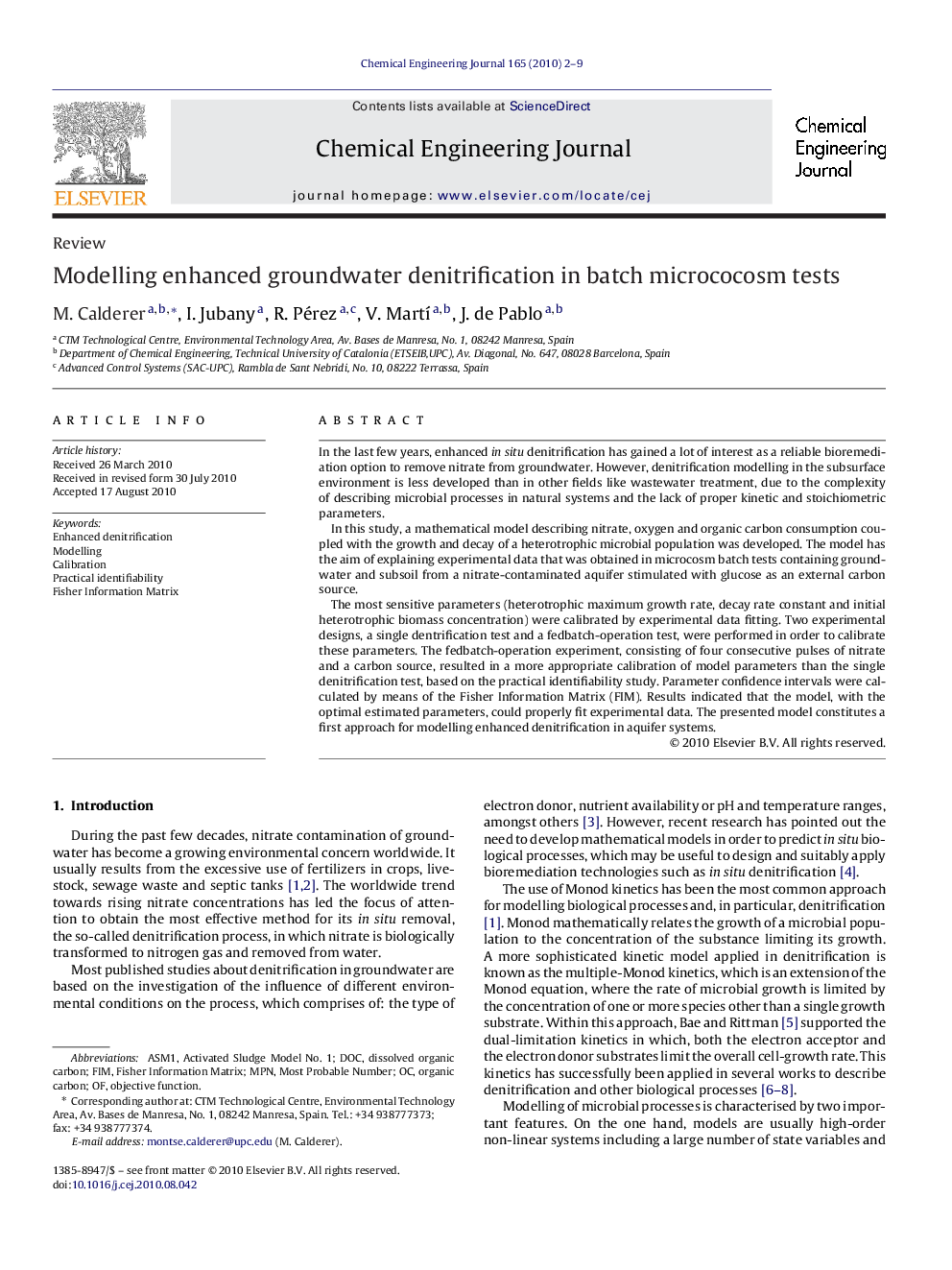| Article ID | Journal | Published Year | Pages | File Type |
|---|---|---|---|---|
| 151992 | Chemical Engineering Journal | 2010 | 8 Pages |
In the last few years, enhanced in situ denitrification has gained a lot of interest as a reliable bioremediation option to remove nitrate from groundwater. However, denitrification modelling in the subsurface environment is less developed than in other fields like wastewater treatment, due to the complexity of describing microbial processes in natural systems and the lack of proper kinetic and stoichiometric parameters.In this study, a mathematical model describing nitrate, oxygen and organic carbon consumption coupled with the growth and decay of a heterotrophic microbial population was developed. The model has the aim of explaining experimental data that was obtained in microcosm batch tests containing groundwater and subsoil from a nitrate-contaminated aquifer stimulated with glucose as an external carbon source.The most sensitive parameters (heterotrophic maximum growth rate, decay rate constant and initial heterotrophic biomass concentration) were calibrated by experimental data fitting. Two experimental designs, a single dentrification test and a fedbatch-operation test, were performed in order to calibrate these parameters. The fedbatch-operation experiment, consisting of four consecutive pulses of nitrate and a carbon source, resulted in a more appropriate calibration of model parameters than the single denitrification test, based on the practical identifiability study. Parameter confidence intervals were calculated by means of the Fisher Information Matrix (FIM). Results indicated that the model, with the optimal estimated parameters, could properly fit experimental data. The presented model constitutes a first approach for modelling enhanced denitrification in aquifer systems.
